Move over, gold; lithium is now the metal in global demand. Kit Chapman untangles the global politics around the sought-after resource
When Sony launched the first lithium–ion rechargeable battery in 1991, few could have predicted how rapidly they would become a cornerstone of our lives. Now, barely 30 years later, they fill our homes and pockets – and are taking over our roads with the electric car revolution, as well its potential use in large-scale energy storage devices (see p30). It’s the lithium rush – something akin to the demand for copper or nitrates during the industrial revolution, or oil during the 20th century. And, like those ages before, we’re already seeing a change in global agendas as countries vie for control of the lightest metal on the periodic table.
Batteries – particularly for electric cars, which need around 20–30kg of lithium – represent about 80% of lithium use and have caused demand to soar. In 1995, around 9700 tons of lithium was mined worldwide. Fast-forward to 2021, and the United States Geological Survey (USGS) reported global production of around 107,000 tons, with a global demand of 95,000 tons. In 2022, despite production increasing to 130,000 tons, global consumption rocketed to 134,000 tons. With it, prices of battery grade lithium carbonate soared, from $12,600 to $37,000 (£10,000 to £30,000) per metric ton. It’s a situation unlikely to improve, with the International Development Agency predicting a 40-fold increase in the demand for lithium by 2040.
This rise has come despite there being no real shortage of lithium in the world. It’s the 33rd most abundant element on Earth, and the USGS puts the worldwide potential amount at about 98 million tons – even ignoring the oceans, which contain far more. Half of these deposits are believed to be in South America, in a triangle covering Bolivia, Argentina and Chile (about 52 million tons combined), followed by Australia (7.9 million tons), the US (12 million tons) and China (6.8 million tons). Country reserves are estimated from a combination of continental, geothermal and oilfield brine, claystone and hectorite (a white, greasy clay rich in lithium), and the igneous rock pegmatite.
Metal magnates
But despite being relatively plentiful, that doesn’t mean it’s easy to obtain. In fact, 98% of the world’s entire lithium supply comes from just five countries: Australia, Chile, China, Argentina and Brazil (see box The other metals below for more on different elements in batteries). The problem, explains Jason Love, a professor of chemistry with an interest in lithium at Edinburgh University, UK, isn’t abundance: it’s access. As a group 1 metal, lithium is highly reducing and doesn’t exist on its own. ‘The molecules that contain lithium are relatively simple,’ Love says: ‘things like lithium chloride, hydroxide or carbonate. The challenge is that the compounds themselves are very stable.’

There are two ways to mine lithium on a large scale. The first is by extracting an ore through drilling, crushing it and then processing it in a hydrometallurgical plant – the technique favoured in Australia, the world’s current leading producer (about 61,000 tons a year), which mainly extracts lithium oxide from the silicate mineral spodumene. Unfortunately, this method is ‘surprisingly difficult’, Love explains. ‘The chemistry is against you. Lithium is such a small cation that once dissolved in water it becomes very hydrated. One of the main techniques for extracting metals is technical solvent extraction, in which you have an aqueous phase and a hydrophobic organic phase, and you design a receptor that pulls your metal of choice out of aqueous and into the organic phase. To do that, you need to dehydrate the metal.’
Unfortunately, this process is inefficient – only capable of extracting 60–70% of lithium in the rock – and, more importantly, incredibly energy-intensive. Unless there is significant investment in green energy technology, lithium – despite its supposed green credentials – can be a net contributor to the world’s climate emergency.
The alternative is equally difficult. The world’s second-largest supplier of lithium is Chile (39,000 tons a year). Rather than crush rocks, the Chilean mines pump out lithium dissolved in groundwater brine, which is then poured into pools that can evaporate in the hot, dry wastes of the Atacama desert, eventually leaving white, powdery lithium salts. Yet as stunning as these appear – from shades of aquamarine to bright yellow, like a disturbed artist’s palette dropped in the otherwise empty expanse of the driest place on Earth – they leave a terrible chemical legacy, including damage to fresh water supplies for local communities and disruption to wildlife habitat.
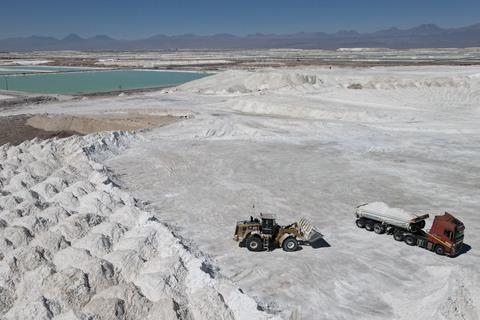
In Chile, the local flamingo population has been reduced by 11% over the past decade. It’s for this reason – along with the technological challenge of lithium extraction, and potential concerns that lithium can be used in the creation of nuclear weapons – that countries such as Bolivia haven’t been able to capitalise on its wealth, and remain outside of the top 10 producers globally.
There’s another problem, too: creating a supply chain to develop these industries at the pace needed. So far, only one country has been able to deliver.
The other metals
Batteries aren’t just made of lithium; the cathode is usually a combination of nickel, manganese and cobalt (NMC). According to the US Geological Survey, there are an estimated 300 million tonnes of nickel worldwide in land-based deposits, mostly as sulfides. The leading exporter is Indonesia, at around half of the 3 million tonnes mined per year. But demand is growing. The higher the nickel content, the more energy-dense the battery, and currently research aims to reduce the use of cobalt and manganese. This meant global nickel prices shot up by one third in 2022.
Manganese is a common element that is widely distributed around the world; currently, the main exporter is South Africa, which holds about 30% of the planet’s unmined reserves.
The largest exporter of cobalt is the Democratic Republic of Congo, supplying 130,000 tonnes of 190,000 tonnes mined globally. However, this is less of a concern; around a quarter of cobalt used is recycled, and western nations have significant reserves – as well as up to 120 million tonnes in nodules on the ocean floor.
Geopolitical landscapes
When it comes to lithium, China is leading the world. Already the third-largest producer, the superpower also controls around 60% of the world’s lithium refining capacity according to the World Economic Forum. ‘China has been building green technologies for the past decade,’ explains Marina Zhang, an associate professor at the University of Technology Sydney, Australia. While other states, such as the US and EU, have been hampered by their existing automotive industries in developing electric vehicles, Zhang says, ‘China has released more than 100 industrial policies to support electric vehicles and the lithium supply chain. They’re putting a lot of money into it.’ Conversely, the west – particularly the US – is years behind, and building a lithium infrastructure would have a huge environmental impact.
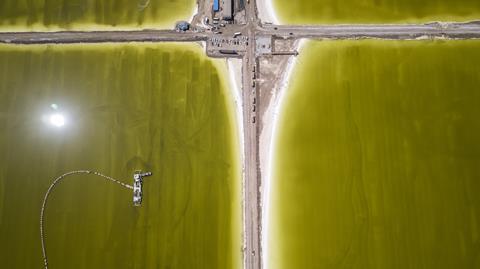
This doesn’t mean China has it all its own way; while it does have lithium deposits, these are remote. ‘You’ve got to think about logistic costs,’ Zhang says. ‘It’s not just extraction and refinement, it’s also transport. And the lithium-rich area of China is not easily accessible. Second, while China has access to foreign resources, they probably tend to use them first [and save their own reserves].’
That puts South America firmly in China’s sights when it comes to lithium mining: and it’s a situation that’s familiar to the region. During the 19th century, South America was seen as a colonial hangover ripe for exploitation. Several wars were fought over its chemical wealth, most notably the War of the Pacific from 1879–1884, in which Chile defeated a Peru–Bolivian alliance to claim guano deposits (rich in nitrates essential for gunpowder and fertiliser) along the coast. ‘Chilean saltpetre’ remained a major part of the world economy until the invention of the Haber–Bosch process for nitrogen fixation; Bolivia remains landlocked to this day. A trade bloc is already beginning to appear – since 2018, Argentina and Chile have supplied 91% of the US’ lithium demands.
And, as demands grow and South America struggles to develop the infrastructure needed to be a global player on the lithium stage, it’s Australia that’s already being courted by both the east and west.
As soon as an element becomes scarce, then the country producing it can inflate prices
‘Australia’s in a very tricky position,’ says Zhang. ‘They’re in a geopolitical competition between the US and China. Australia is being pushed by the US to join its supply chain – but that’s not matured yet, and it will take years. And Australia’s largest export market currently is China.’ Given China’s dominance of lithium refining, if Australia chose to look elsewhere, it could see its lithium production – the country’s sixth most-valuable export – begin to dry up. ‘Australia has to think whether it wants to continue to supply China, and benefit from economic ties, or whether it should follow up with its political alliances with the US, for national security reasons.’
If, in the short term, Australia is caught between superpowers, in the future it could find itself, along with the likes of Bolivia, prospering in the same way as the gulf states did with the discovery of oil. ‘I think history will repeat itself,’ says Love. ‘As soon as an element becomes scarce, or critical, then the country producing it can inflate prices and manipulate demand … there’s going to come a time when the countries that have these deposits won’t want to send them abroad, they’re going to want to sell you batteries, instead! And that’s when it gets expensive.’
Past mistakes, future challenges
It isn’t a sure-fire bet that such a future will come to pass, however. A decade ago, as part of its Belt and Road policy, China began to make trade deals with African nations to secure rare earth element deposits. ‘Rare earth elements play a more important role [than lithium] in national security,’ Zhang says. ‘China has been aware of their geopolitical significance for some time, and so extraction, refinement, and downstream production are largely controlled by state-owned enterprises. They’re a potential wildcard [China] could try to use.’
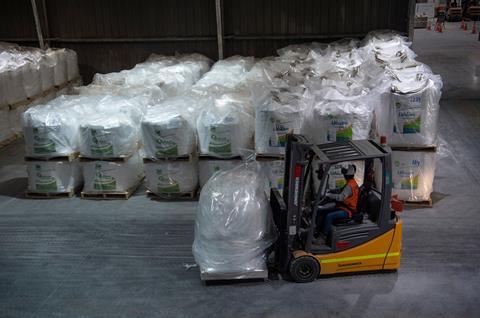
Other countries are aware of this, though. ‘China effectively became the primary supplier of rare earth elements about 10 years ago, but that’s not the case now.’ Love explains. ‘There was, in effect, a global response to make sure that there are other ways to supply the rare earths when they are required. I think the same will happen to lithium as well; if it becomes critical, and it probably will, other countries will start mining their own deposits.’
This is a pattern that’s already being seen around the world. Currently lithium projects are starting in countries as diverse as Finland, Ethiopia, Zimbabwe and Kazakhstan, all hoping to secure their own national interests. And last year, the US Department of Energy provided $1.6 billion in funding for 12 lithium projects, following a bipartisan law approved by congress to upscale its lithium economy.
Yet even if it can do so, some of the extraction hurdles remain; in the UK, two companies, British Lithium and Cornish Lithium, have begun to explore the feasibility of mining the country’s own lithium deposits. The problem is that the mines would each require 20MW of electricity to meet their feasibility requirements to make digging worthwhile – an energy draw that would require additional powerplants to be built.
One obvious solution to ease demand is creating a circular economy. ‘As soon as we start recycling, then we have to worry less about extracting the raw material out of the ground,’ Love says. ‘For me, that’s what’s required to ensure we have enough lithium. It’s relatively straightforward, and the chemistry’s not difficult because there’s only a limited amount of metals in a battery, so it’s not a hard separation.’
Lithium has become a significant factor in geopolitics
Unfortunately, there is a serious obstacle: pure lithium ignites on contact with air (or water, as any high school student can tell you). It’s the issue Stanley Whittingham was unable to overcome when developing the first lithium–ion batteries in the 1970s (for which he would later receive the 2019 Nobel prize with John Goodenough and Akira Yoshino), and one that means lithium recycling can’t be done cheaply or outsourced to countries with less stringent safety standards. It’s a problem that means in November 2022 only 44 companies in Canada and the US, and 47 in Europe, were recycling lithium batteries or were planning to do so. ‘I was talking to a waste company and they showed a video of one of their battery storage sites going up in flames as one had corroded,’ Love recalls. ‘The whole lot [of batteries] then went up, and were exceptionally difficult to put out. That’s really the major problem.’
Despite this hurdle, Love thinks this is still the most realistic future technology. ‘There’s a heck of a lot of lithium in the sea,’ he says, ‘something like 230 billion tonnes, but that’s the same as uranium. We can’t get it out! It’s intrinsically difficult. But I would much rather see us try and recycle them. It’s important we are able to do this, and it’s all going to be dependent on chemistry.’
And yet, once again, the challenge with recycling isn’t merely a scientific one, even if the end result would be a greener and more equitable world. ‘Lithium has become a significant factor in geopolitics,’ Zhang says. ‘Would Chinese companies be ready to licence technology to Ford [for example] to boose their battery-manufacturing facilities? No. It’s not likely to occur, because of geopolitical tensions. We used to say science has no boundaries, but even technologies that benefit humankind still face these boundaries. And that is really sad.’
Kit Chapman is a science writer and lecturer in Falmouth, UK
Updated 05 September to remove an incorrect statement about the energy use of lithium mining
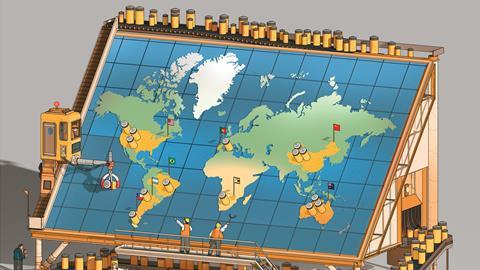


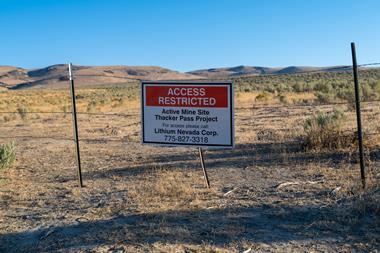


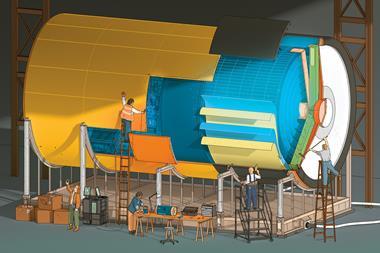






No comments yet